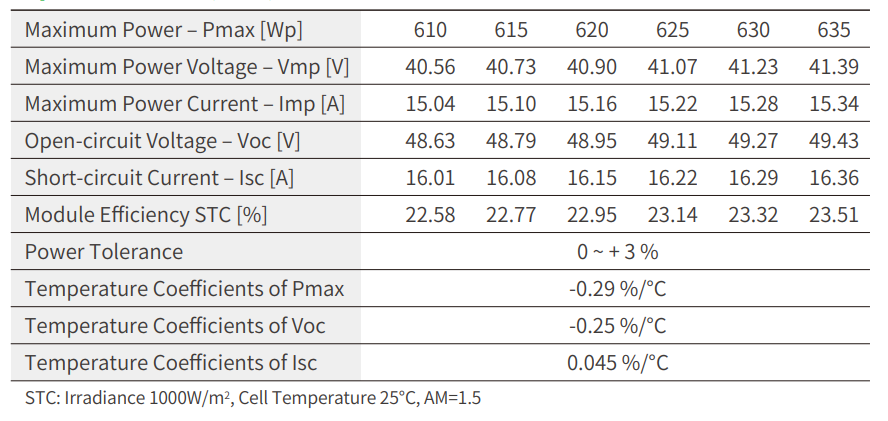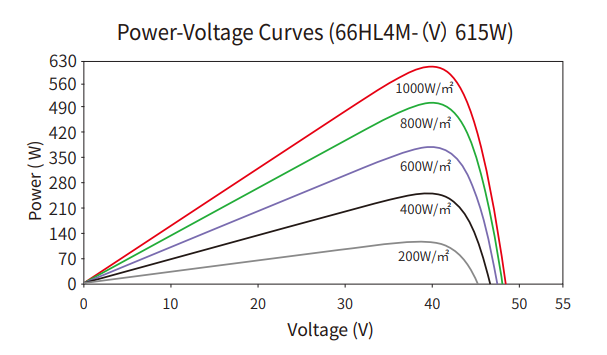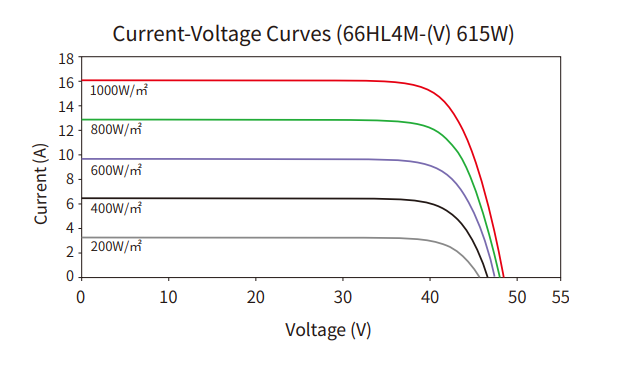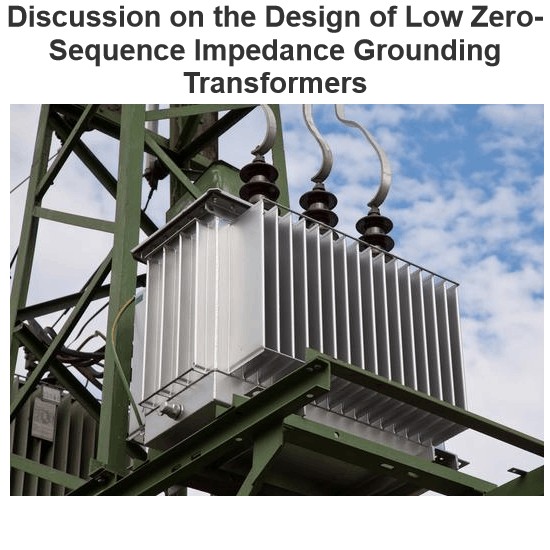| Brand | Wone |
| Model NO. | 66HL4M-(V) 610-635 Watt MONO-FACIAL MODULE |
| Maximum Power | 635Wp |
| Series | 66HL4M-(V) |
Certification
IEC61215:2021 / IEC61730:2023 ·
IEC61701 / IEC62716 / IEC60068 / IEC62804 ·
ISO9001:2015: Quality Management System ·
ISO14001:2015: Environment Management System ·
ISO45001:2018: Occupational health and safety management systems.
Features
N-type modules with Tunnel Oxide Passivating Contacts (TOPcon) technology offer lower LID/LeTID degradation and better low light performance.
N-type modules with Solar's HOT 3.0 technology offer better reliability and efficiency.
High salt mist and ammonia resistance.
Certified to withstand: 5400 Pa front side max static test load 2400 Pa rear side max static test load.
Better light trapping and current collection to improve module power output and reliability.
Minimizes the chance of degradation caused by PID phenomena through optimization of cell production technology and material control.

Mechanical Characteristics

Packaging Configuration

Specifications (STC)

Application Conditions

Engineering Drawings


*Note: For specific dimensions and tolerance ranges, please refer to the corresponding detailed module drawings.
Electrical Performance & Temperature Dependence


What is the LID/LeTID phenomenon?
LID (Light Induced Degradation) and LeTID (Light and Elevated Temperature Induced Degradation) are two phenomena that affect the performance of solar cells. Especially in high-power output modules, these issues are particularly important. The following is an explanation of the LID and LeTID phenomena and their impact on 610-635 watt single-sided modules.
LID:LID refers to the performance degradation phenomenon that occurs when solar cells are exposed to sunlight for the first time. This phenomenon is mainly due to the formation of boron-oxygen complexes in the battery material (usually p-type monocrystalline silicon) under illumination, resulting in a reduction in the efficiency of the battery.
LeTID:LeTID is another performance degradation phenomenon. It occurs when the battery operates under high temperature (for example, above 70 °C) and illumination conditions. The performance degradation caused by LeTID is more serious than that of LID, and the recovery speed is slower.






